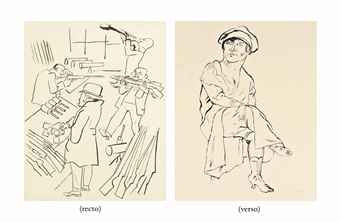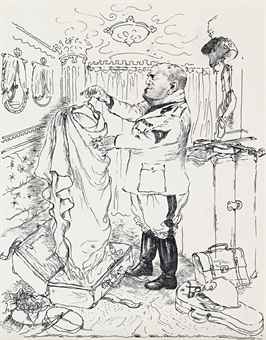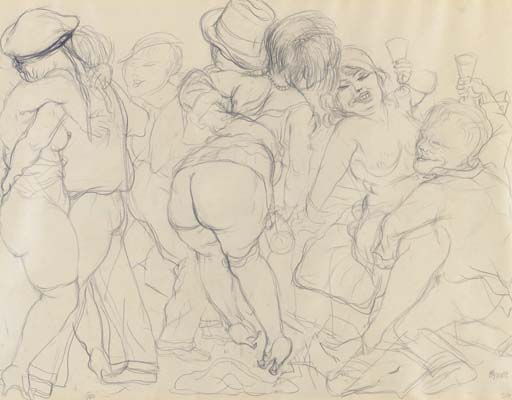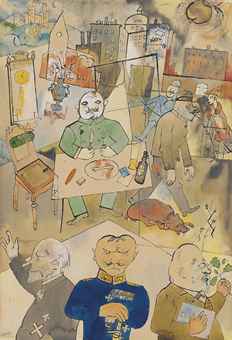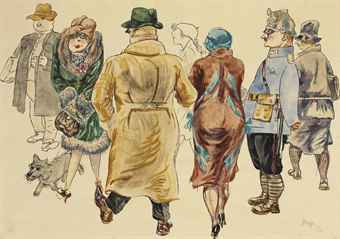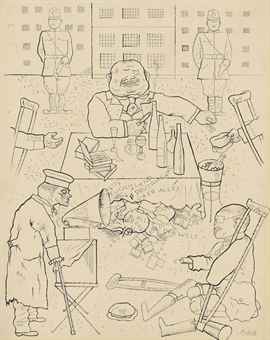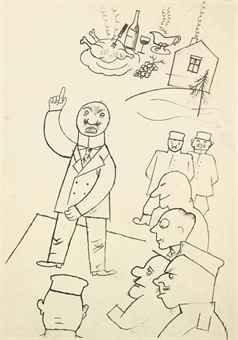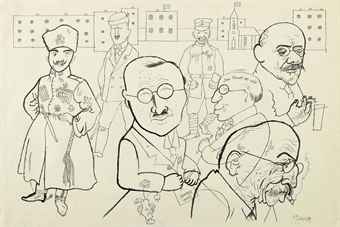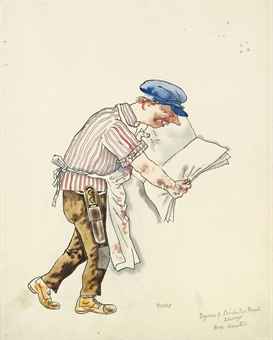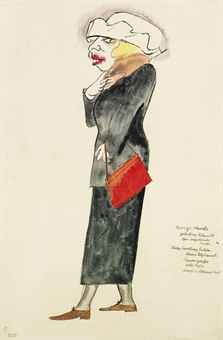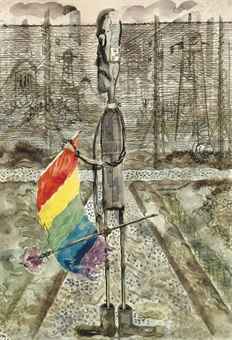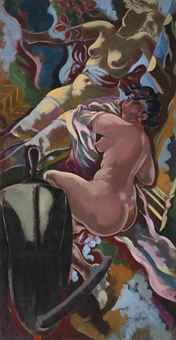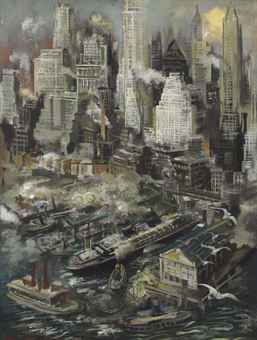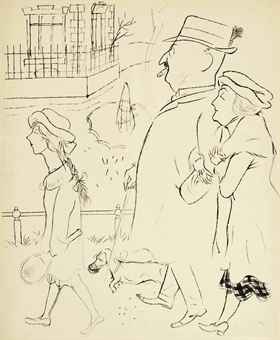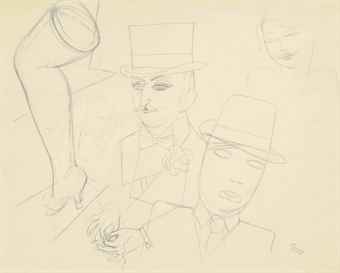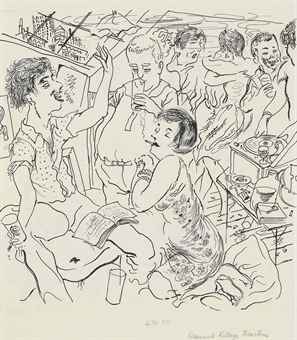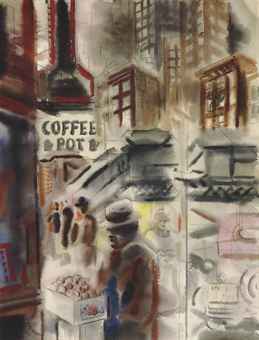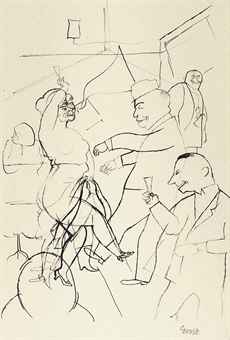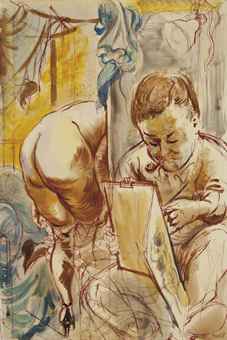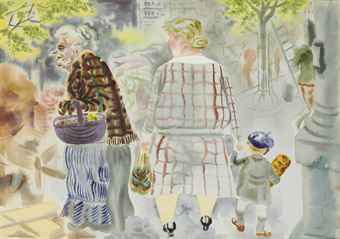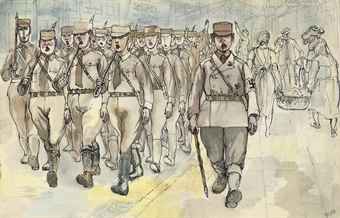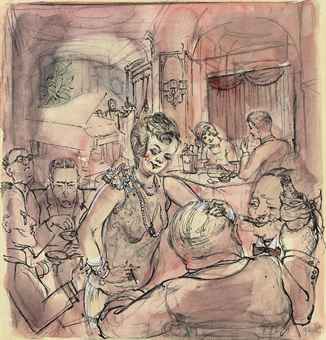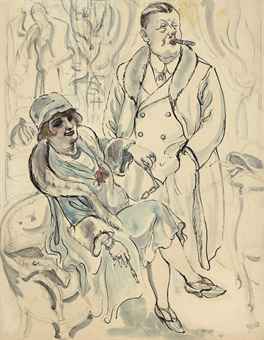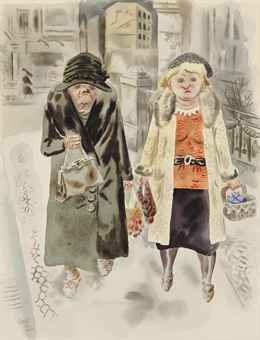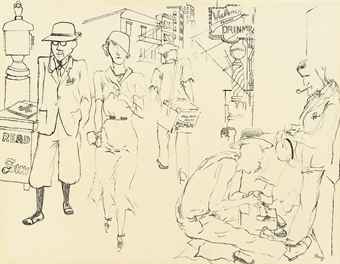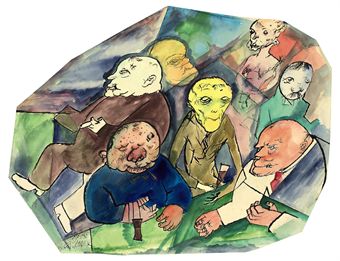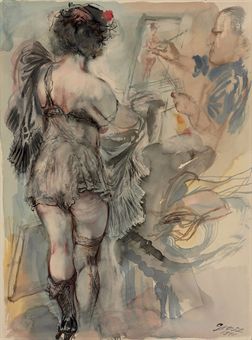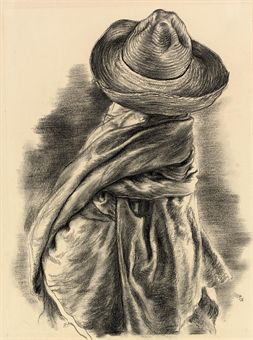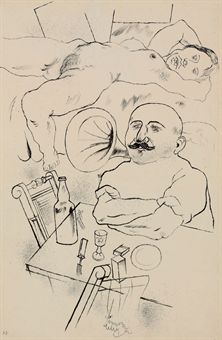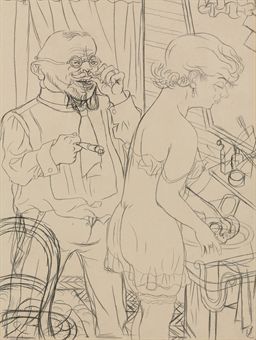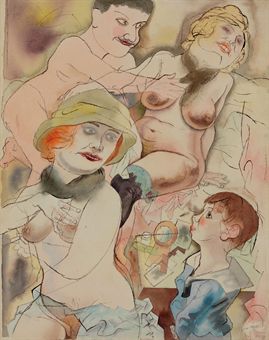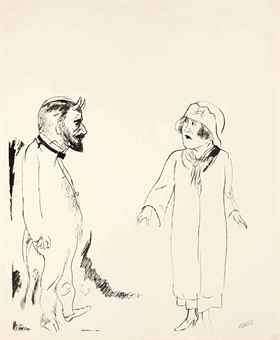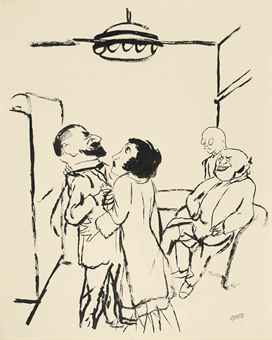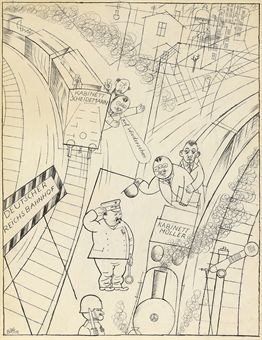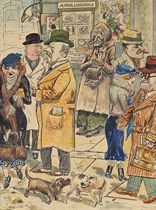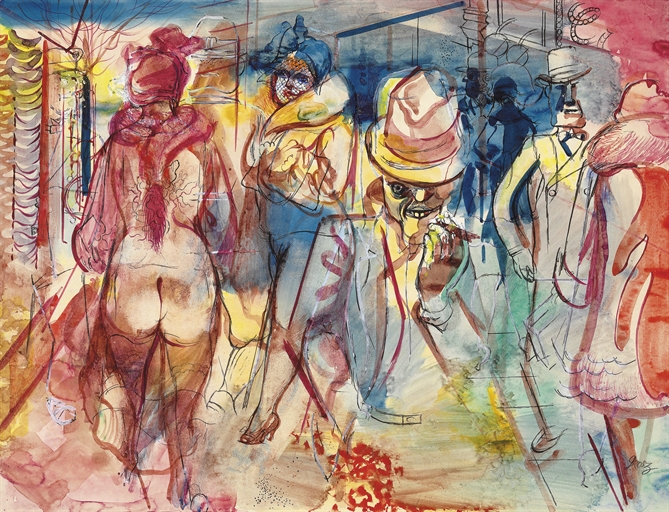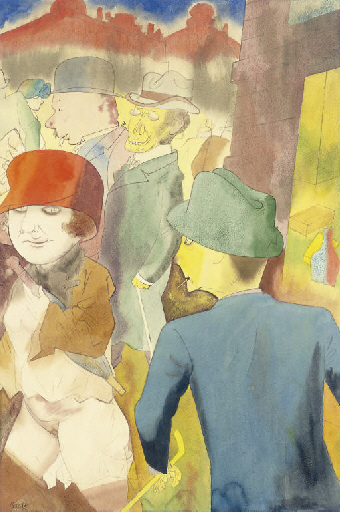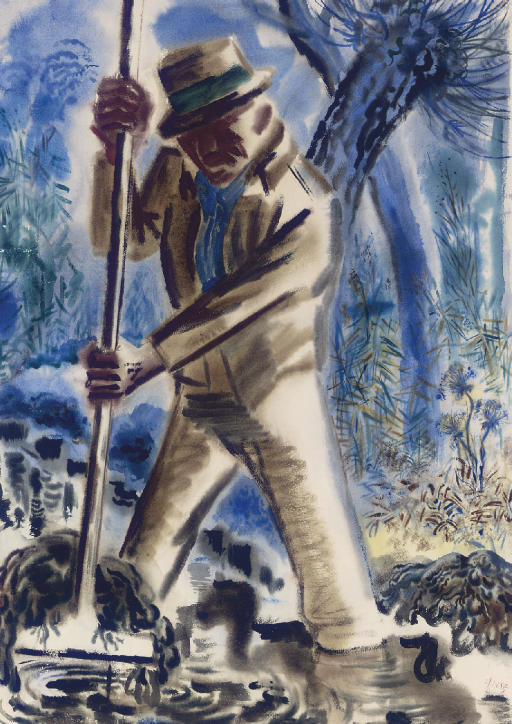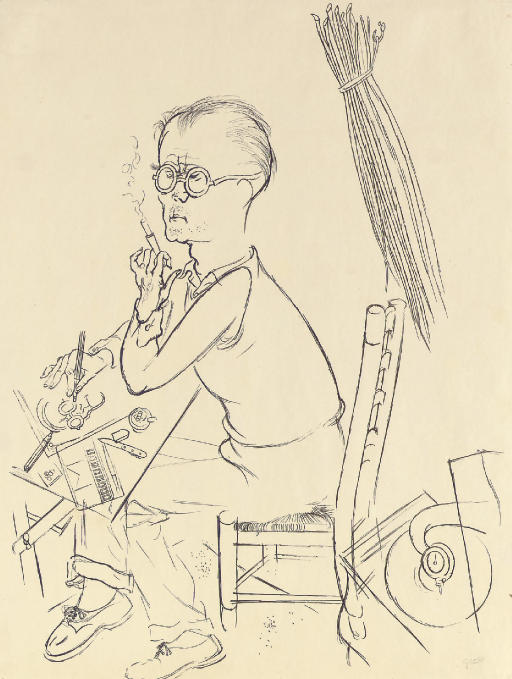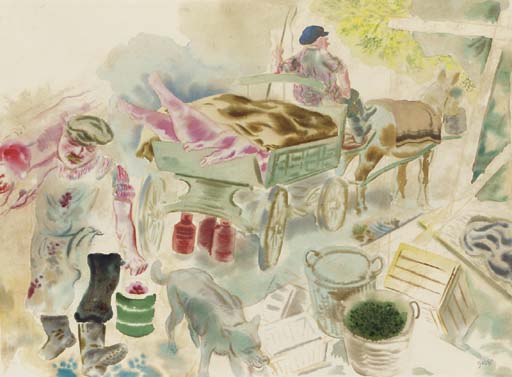Biography courtesy of Menconi + Schoelkopf
Born in Berlin, Germany in 1893, George Grosz (born Gross) was famous in his own lifetime for his satirical caricatures that commented on post-WWI Germany, and later, the Nazi party. He is considered to be most closely affiliated with the Dada movement, helping to found the Berlin Dada Group, as well as the more realistic style “New Objectivity.” This style later influenced artists such as Heinrich Maria Davringhausen, Anton Räderscheidt and Georg Scholz.
Born George Ehrenfried Gross in Berlin, the artist spent most of his early years in Poland. He took his first drawing class in 1901, when he was just eight years old. After being expelled from his first secondary school in 1908, he passed an entrance exam to the Royal Academy of Art in Dresden, where he enrolled and eventually graduated with honors. After graduating, he spent several months studying in Paris at Fillippo Colarossi’s studio, which boasts graduates such as Max Weber, Ralston Crawford and Paul Gauguin.
After a brief stint serving as an infantryman in WWI, which ultimately lead to him having a nervous breakdown, he changed his name from Gross to Grosz, and began to draw satirical caricatures that criticized the bourgeoisie, the clergy, and the military. In 1917 Grosz joined the Dada group, and later that year helped to found the Berlin Dada Group. By 1918 Grosz was considered one of Germany’s leading social critics through his art, and that same year he joined the Communist Party of Germany. However after a six month stay in Russia, Grosz dropped from the Communist Party.
No later than 1925 he had begun painting in a new style, a more realistic style which was dubbed “neu sachlichkeit” or “New Objectivity.” In terms of Grosz’s art it references the satirical realism he employed, an example of this is his drawing Made in Germany, which was published in his book, Gott mit uns or God With Us, a satire on German society. In a broader sense New Objectivity outlines the attitudes of German citizens during the Weimar Republic.
In 1932 Grosz was invited to be a summer lecturer at the Art Students League in New York, an opportunity which he jumped at. After a brief return to Berlin, and upon discovering that the Gestapo were after him, he immigrated with his wife and children to the United States, where he stayed until 1958.
In 1937 Grosz was included in the Nazi Exhibit of “degenerate art,” at the Entartete Kunst show in Munich. The term “degenerate art” was coined by the Nazis, encompassing almost all of modern art, which they believed was non-German, Jewish and/or Communist and therefore was banned.Though he was out of harm’s way, it appears that he tried to keep a lower political profile while in the states, primarily painting nudes and landscapes, with the exception of his work
Cain or Hitler in Hell, 1944. Grosz was the subject of the Oscar-nominated film from 1960, George Grosz’s Interregnum.
George Grosz
Two Women Walking, c. 1929
Watercolor on paper
29 3/4 x 23 inches
Signed at lower right: Grosz
Two Women Walking was created in 1929, just a few years before George Grosz emigrated from Germany to the United States. He arrived in New York as a famous and successful social satirist, albeit highly controversial, whose work had been widely published in portfolios and illustrated magazines.
Grosz’s subjects were the rich and the poor, the upstanding and the debauched. During the 1920s, he made many watercolors portraying the full range of life in Germany during the Weimar Republic. These works were widely collected by wealthy Germans who were often the objects of his satire, as seen here with these two well-dressed Berlin women who are recognizable as archetypal bourgeoisie.
RECORDED
Philadelphia Museum of Art, 2009, Adventures in Modern Art:The Charles K. Williams II Collection, pp. 163, 164, pl. 49, illus. in color, 166
Philadelphia Museum of Art, 2009, Adventures in Modern Art:The Charles K. Williams II Collection, pp. 163, 164, pl. 49, illus. in color, 166
Sotheby's 2014
LOT SOLD. 40,625 US
Christie's 2015
LOT SOLD. 28,125 USD
Christie's 2014
Christie's 2013
Christie's 2012
LOT SOLD. 40,625 US
Christie's 2015
Sotheby's 2013
LOT SOLD. 28,125 USD
Christie's 2014
George Grosz (1893-1959)



